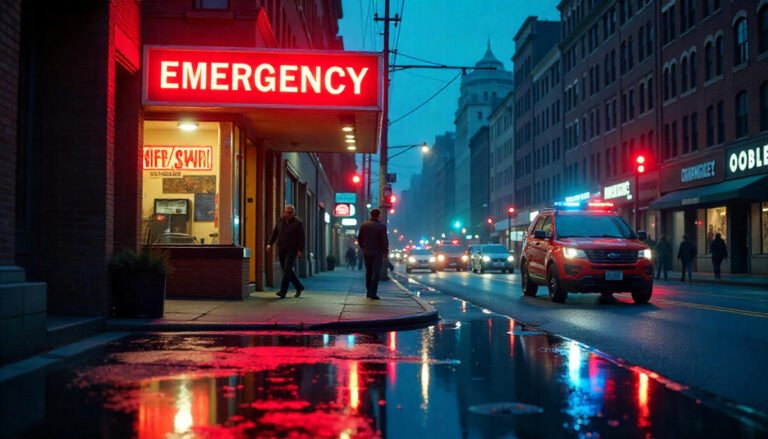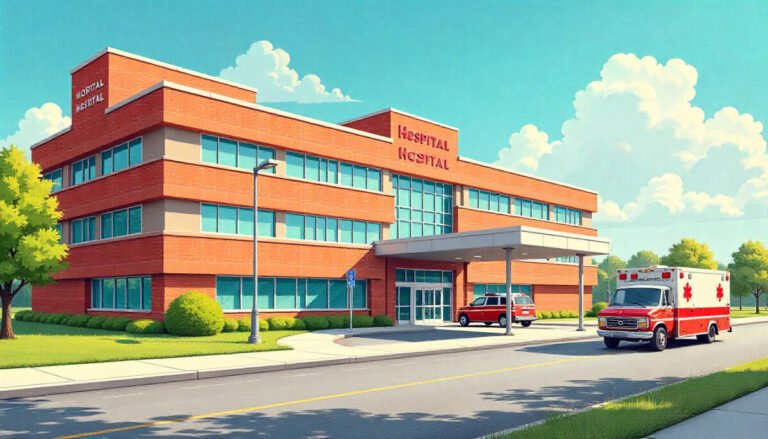Emergencies can happen at any moment — whether you’re at home, work, or traveling through Ohio. Knowing the right numbers to call and where to go can make a life-saving difference. This 2025 guide will walk you through emergency contact numbers, top hospitals, and essential tips every Ohio resident or visitor should know.
1. Important Emergency Numbers in Ohio

When every second counts, these are the numbers that matter most:
911 – General Emergency Number
Call 911 immediately for life-threatening situations such as severe injury, stroke, heart attack, or major accidents. Operators will connect you to police, fire, or medical services.Poison Control Center: 1-800-222-1222
For accidental poisoning, medication overdoses, or chemical exposure, you’ll get direct access to medical professionals who can guide you before paramedics arrive.Ohio Department of Public Safety (ODPS):
Visit the official site for road safety updates, statewide emergency alerts, and preparedness resources.Ohio Emergency Management Agency (EMA):
The EMA handles disaster response, storm alerts, and evacuation information across all counties.Ohio Department of Health:
Offers up-to-date health alerts, outbreak information, and hospital resource data.
2. Top Emergency Hospitals in Ohio (2025)

Ohio is home to some of the nation’s most advanced hospital networks. Here are some of the best-known emergency and trauma centers for fast, reliable care.
a. The Ohio State University Wexner Medical Center (Columbus)
Location: 410 W. 10th Ave, Columbus, OH 43210
Phone: (614) 293-8000
Website: wexnermedical.osu.edu
Why it’s trusted: A Level I Trauma Center offering 24/7 emergency and specialty care, including cardiac, stroke, and trauma response.
b. Cleveland Clinic Main Campus (Cleveland)
Location: 9500 Euclid Ave, Cleveland, OH 44195
Phone: (216) 444-2200
Highlights: One of the world’s best hospitals for heart care and advanced emergency medicine. Cleveland Clinic’s ER handles everything from severe trauma to pediatric emergencies.
c. University Hospitals Cleveland Medical Center
Location: 11100 Euclid Ave, Cleveland, OH 44106
Phone: (216) 844-3722
Website: uhhospitals.org
Why it’s notable: Level I adult and pediatric trauma center, open 24/7. Known for its rapid emergency response system and specialized trauma teams.
d. OhioHealth Riverside Methodist Hospital (Columbus)
Location: 3535 Olentangy River Rd, Columbus, OH 43214
Phone: (614) 566-5000
Website: ohiohealth.com
Best for: Central Ohio residents. Offers cardiac and neurological emergency treatment with one of the busiest trauma centers in the state.
e. The Christ Hospital (Cincinnati)
Location: 2139 Auburn Ave, Cincinnati, OH 45219
Phone: (513) 585-2000
Website: thechristhospital.com
Why it stands out: Known for its rapid heart and vascular emergency response team and modern emergency facilities.
3. Regional Emergency Coverage in Ohio

| Region | Main Hospital / System | Specialization |
|---|---|---|
| Central Ohio | OSU Wexner Medical Center, OhioHealth Riverside | Trauma, Stroke, Cardiac |
| Northeast Ohio | Cleveland Clinic, University Hospitals | Heart Care, Pediatrics |
| Northwest Ohio | ProMedica Toledo Hospital | Trauma, Surgery, Pediatric ER |
| Southwest Ohio | The Christ Hospital, UC Health | Cardiac, Emergency Trauma |
| Southeast Ohio | Adena Regional Medical Center (Chillicothe) | Rural & Regional Emergencies |
4. When Should You Go to the ER vs. Urgent Care?
Not every medical problem requires an emergency room visit. Knowing the difference saves time and money.
Go to the ER if you experience:
Chest pain or pressure
Difficulty breathing
Severe bleeding or burns
Sudden confusion or loss of consciousness
Serious injuries from an accident
Visit Urgent Care for:
Minor cuts or sprains
Moderate fever or flu symptoms
Minor allergic reactions
Ear infections or sore throat
- For non-life-threatening but urgent medical care.
5. Tips for Staying Prepared in Ohio
Save contacts in your phone: 911, nearest hospital, and family doctor.
Keep a first aid kit: Include bandages, antiseptics, pain relievers, and gloves.
Know your insurance coverage: Some emergency visits may be out-of-network.
Teach kids emergency basics: They should know how to dial 911 and give an address.
6. Additional Resources
Ohio Hospital Association: ohiohospitals.org — provides statewide hospital listings and emergency standards.
Centers for Disease Control (CDC): cdc.gov — updates on public health emergencies, flu, and COVID-19 alerts.
Final Thoughts
Emergencies are unpredictable — but preparation gives you control. Ohio’s hospital systems and emergency services are among the best in the country, ready to respond whenever needed. Whether you’re in Columbus, Cleveland, Cincinnati, or a small town, knowing who to call and where to go ensures you and your loved ones get help fast.
Save this guide, share it, and stay safe in 2025!
Frequently Asked Questions (FAQ)
1. What number do I call for any emergency in Ohio?
Always call 911 for any life-threatening emergency in Ohio — whether it’s medical, fire, or police-related. The dispatcher will connect you to the nearest emergency responders.
2. What’s the difference between urgent care and the emergency room?
The ER (Emergency Room) is for serious, life-threatening conditions like chest pain, heavy bleeding, or major injuries.
Urgent care is for minor but still urgent issues — like sprains, ear infections, or mild allergic reactions. If you’re unsure, call ahead or visit the nearest ER.
3. How can I find the nearest hospital in Ohio?
You can use the Ohio Hospital Association’s hospital locator or Google Maps to find hospitals near your location. For verified trauma centers.
4. Do hospitals in Ohio provide care if I don’t have insurance?
Yes. Under U.S. federal law (EMTALA), hospitals must provide emergency care regardless of insurance or payment status. Many hospitals also offer financial assistance or charity care programs for those in need.
5. What should I keep ready for a medical emergency?
Keep a small emergency kit at home and in your car. It should include:
A list of emergency contacts
Personal ID and insurance card
Basic first aid supplies
List of medications and allergies
Having these items ready can help medical staff respond faster.




